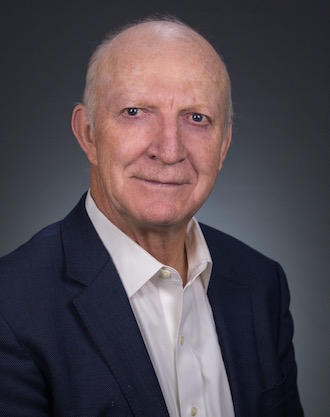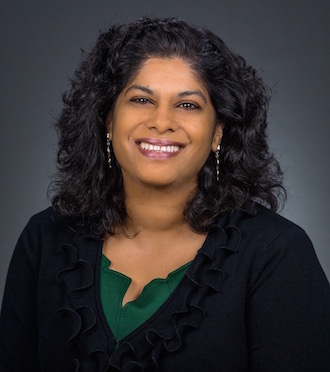
Welcome to the conclusion of this two part series on the newest hot topics in melanoma research.
In Tanorexia? The Latest Skinny on Melanoma, we debunked myths about who is at risk and addressed means of prevention along with rare, devastating forms.
I enlisted the help of three leading melanoma researchers from The Wistar Institute —our nation’s first independent biomedical research facility where I am a member of the leadership council. Today, we focus on immunotherapy and the new frontier in the field of melanoma research and treatments.
Let’s continue the conversation with Meenhard Herlyn, D.V.M., D.Sc., Jessie Villanueva, Ph.D., and Ashi Weeraratna, Ph.D. from the Wistar Institute Melanoma Research Center (responses are listed using their initials):
Who is at greatest risk to develop skin cancer?
MH: An example of a light skinned person or classical person is Jimmy Carter. Got burned frequently when grew up and most likely never used sunscreens. You can see it in his skin, it is really severely damaged.
So, now what is happening is the schools try to educate the kids that they should wear a hat. Certainly, the mothers are encouraging their kids they should wear sunscreens if they go out and that helps.
As studies in Australia have shown, it helps a while then there is a plateau. People generally resist getting too much into these safety habits. That is the problem that there is still a lot of damage being done to the young kids up to an age of say 15-16, 18 where they are most vulnerable and then their cancers may start 40 years later. That can be a general skin cancer that can be treated with liquid nitrogen and then it is forgotten, or it is melanoma. If they then refuse to go regularly to the dermatologist and not get checked, then that is where you have these advanced tumors where the tumor cells have spread throughout the body and you find even today it is very, very hard to keep these tumor cells under control.
It was reported that Jimmy Carter had metastatic melanoma (with spread to liver, brain for example) and that he received surgery, radiation and immunotherapy and is cured:
What is Immunotherapy?
AW: Harnessing the immune system to work against the tumor. The way that the current immunotherapies are working is that they are called checkpoint inhibitors. So, it turns out that tumor cells send out these checkpoints, essentially, or signals that can help to block the efficacy of your own immune system. And the way the inhibitors work, roughly, are to come in and stop those signals and allow the immune cells sitting in that tumor microenvironment to do their job.
Why is immunotherapy the new frontier and so successful in melanoma? Is this unique or are other sufferers yielding the same results?
MH: Melanoma was always the poster child for immunotherapy in cancer —for several reasons. The body defense system in melanoma patients is very active. The cells could be taken in surgery out of the body and they could be maintained in the laboratory, so one could study them and the interactions of the tumor cells with the immune cells.
Melanoma was the first disease where a lot of vaccines were treated. Until about 7-8 years ago all the large clinical trials in immunotherapy did not work—they were completely failing. Then there was a game from some mouse experimental melanoma studies, a new class of drugs came up. They suddenly started to work not only in mice, but also in patients and the first drugs have been approved about 5 years ago.
These are the drugs that Jimmy Carter got treated with, they still have some problems. They don’t work in all of the patients, maybe about 1/5 of the patients. There is also 1/5 of patients who have really severe toxicities that they have to stop the treatment. So, the challenge is now to identify those patients who would really benefit from these new therapies and then avoid treating those patients who would be hurt, really severely hurt.
We have that in our closest circle of friends where the immune system is so stimulated that it attacks their own body and then there is nothing that can be done anymore. We need to not just take care of the 20 or 30% and that’s roughly the percentage of patients who are getting almost cured, we are not sure yet but we think so. We need to up this, and that is a big challenge. We are not there yet.
Was Jimmy Carter’s treatment so successful because of the combination of therapies or the immunotherapy alone?
AW: It’s immunotherapy itself.
MH: It’s the immunotherapy, but there are also new signaling therapies that are very good in increasing survival and also give a relatively good window where the patients feel really well. However, often the patients come back with resistance and then there are problems about how to treat that generation of tumors. There is still much work to be done, but if you compare the progress in the last 5 years to what happened the 25 years before it is almost like night and day. It has unbelievably improved in this relatively short time period.
What do you need to accelerate your research? For example, you have a Melanoma Cell Line Repository with over 500 cell lines—how does this benefit your work? Is data-sharing improving? Collaboration? Funding? What is the greatest impedance to cure?
MH: These resources were generated over the last three-and-a-half decades. They are a classical example of being tools that scientists use. These tools are common to all of the laboratories in this country or in the world. There is so much knowledge on these tools that people can compare notes and they all can speak the same language. Since the tools are the same one can put the stones of the building much better together. Those type of models are essential because they also bring in multidisciplinary experts from other fields like chemistry, or physics. Because they use the same tools, we can learn their language as they will have to learn some of our biology language and this exchange is essential for success in the next decades. It is not easy to do— to develop programs that contain so many new disciplines as also the disciplines are continuously in motion. For example, 15 years ago there was no bioinformatics or computer science that went into the biological science and today we couldn’t live without it.
AW: In the melanoma field, collaboration is really not an issue. Everyone is very collaborative. Meenhard gets a lot of credit for that. About 15 years ago, he set up a Society for Melanoma Research along with the Noreen O’Neill Foundation. His whole reason for doing that was to bring together all of the researchers in the field. Now, it’s blossomed from a meeting of about 80 people the first time to a meeting of over 1500 people from clinicians to scientists.
So, collaboration is not an issue for us in the melanoma field, perhaps I am being naive for saying that, but I have never found it to be an issue. I think really our biggest impedance is the lack of resources in terms of funding for innovative research for things that are going to be high risk, high reward. That has really been lagging for every branch of cancer research, not just melanoma.
Take Home Messages
- People with light skin and blue eyes are at highest risk of melanoma, but every ethnicity can get it
- Everyone should get regularly checked (especially with a personal or family history of skin cancer) and discuss their risks with their doctor
- Sun exposure happens year-round
- Prevention:
AW: Sunscreen should be replaced every 6 months. There are some terrible sunscreens. Nothing above 30 SPF works and you want something that blocks both UVA and UVB. You want something that says broad spectrum. Reapply often— every 70 minutes.
MH: There are some bad sunscreens because they are not heavily controlled in the U.S. The sun protection is as good as the company that makes the sunscreen labels it. There is no control on the federal level that the protection is actually what it is supposed to be.
JV: You need to cover your skin too, so don’t just count on the sunscreen but also use protective clothing and your hat. And, don’t forget your sunglasses.
Sources:
Meenhard Herlyn, D.V.M., D.Sc.:
- Caspar Wistar Professor in Melanoma Research
- Director, The Wistar Institute Melanoma Research Center
- Professor, Molecular and Cellular Oncogenesis Program
-
“Worked for 40 years on melanoma — initially, in first years, working on finding new diagnostics. In the last two decades on therapies, heavily invested in drugs that, hopefully, will lead to cure in Melanoma.”

- Assistant Professor, Molecular and Cellular Oncogenesis Program
- Member, The Wistar Institute Melanoma Research Center
-
“Investigate the biology of melanoma with the goal of finding new targets and developing new therapies especially for patients who have very limited therapeutic options.”

- Ira Brind Associate Professor
- Associate Professor and Co-Program Leader, Tumor Microenvironment and Metastasis Program
- Member, The Wistar Institute Melanoma Research Center
-
“Work on how the microenvironment effects melanoma metastases and therapy resistance. I lead a team on tumor microenvironment and metastasis at Wistar studying as we get older how the skin affects melanoma progression.”

